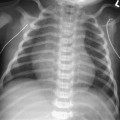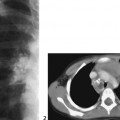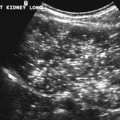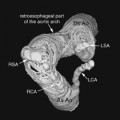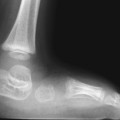CASE 102 Patient presented with a peripherally inserted central catheter (PICC) that did not give blood return and was flushing with some difficulty. During flushing the pressure suddenly improved. On further examination there was swelling over the PICC insertion site. Figure 102A The fluoroscopic image of the right arm demonstrates PICC line above the elbow (Fig. 102A1) with a detached fragment in the main pulmonary artery extending to the right side (Fig. 102A2). Fractured PICC line Reliable vascular access is an integral part of pediatric care. A peripherally inserted central catheter provides stable access to a central vein and allows for regular blood work. PICC lines are indicated for administrating medications that are damaging or irritating, have high osmolality, or a nonphysiologic pH. They can also allow for aggressive parenteral nutrition. A PICC line eliminates the need for repeated peripheral access with its associated pain and trauma. PICC lines are made of either silicone or polyurethane. They come in sizes from no. 2 to 7 French. They are available in single and double lumens. They are fixed in position with dressings and tape, sutured to the skin, or have a polyethelene terephthalate (e.g., Dacron) cuff that is placed just below the skin, with the exit site sutured tight with resorbable sutures. We use the cuffed silicone catheters for children, as we feel that the catheter is more secure, and there are no sutures to remove. The etiology of catheter fractures is uncertain; however, it probably results from an incomplete occlusion with attempt to unblock the line (with a small volume syringe) resulting in significant pressure rise and fracture at the junction between the thicker proximal part of the catheter and the smaller internal portion. Incidence of PICC fracture and embolization is estimated to be 6.7 per 1000 PICCs inserted.
Clinical Presentation
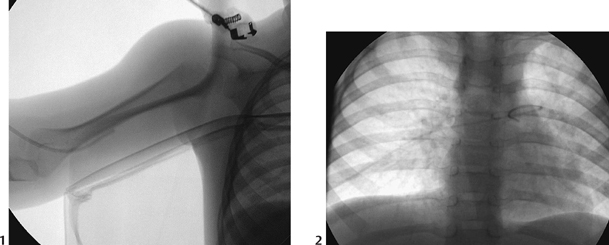
Radiologic Findings
Diagnosis
Differential Diagnosis
Discussion
Background
Etiology
Clinical Findings
Stay updated, free articles. Join our Telegram channel

Full access? Get Clinical Tree



